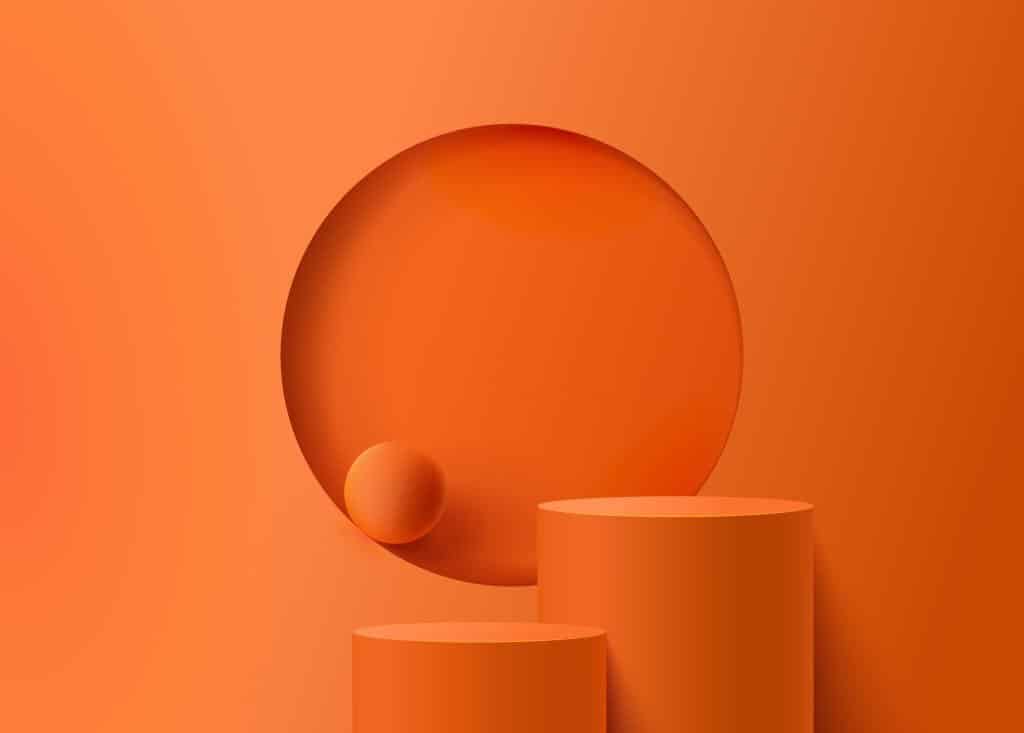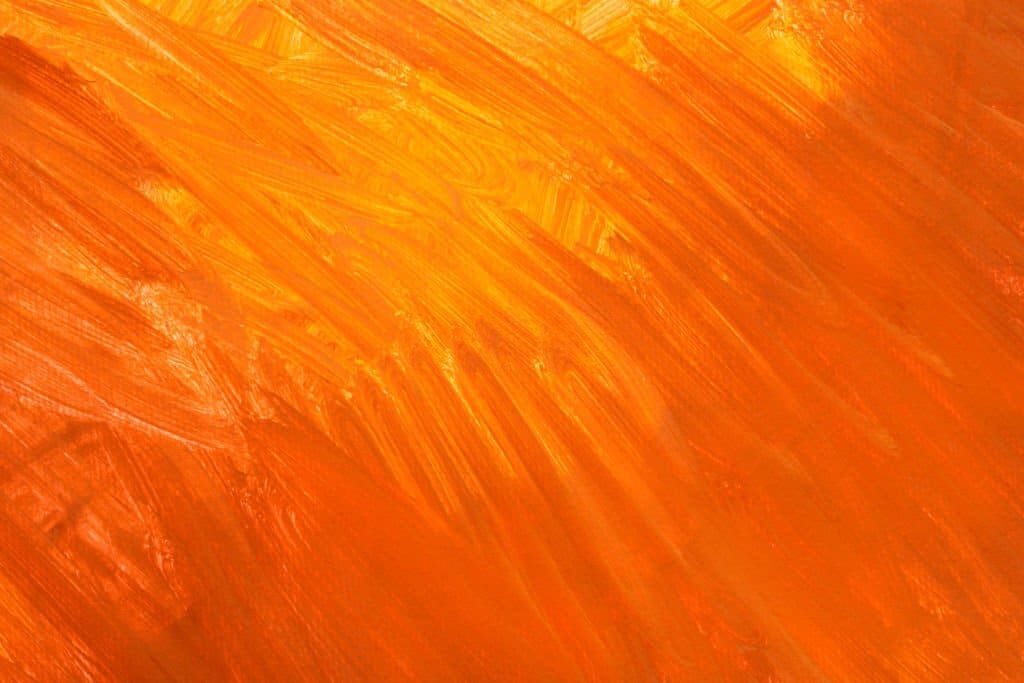If you’re an artist, a designer, or a cool lover of colours, you’ll need to know what colours make orange, so you can know which will blend properly.

Orange is one such beautiful colour you can’t resist. Plus, it comes in different shades that can brighten graphic design.
It’s quite easy to learn how to generate orange colour, but you’ll need to know more about some basic colour theory to understand how to make specific hues.
However, don’t worry—we’re here to assist! You will learn everything you need to know about the colours that form orange in this article.
READ: 20+ Gorgeous Bridal Train Styles to inspire your Wedding Day
What colors make Orange

To understand what colours make orange, let’s closely examine the colour wheel and the science behind it.
The colour wheel is a circular diagram showing the primary, secondary, and tertiary colours and their relationships.
Primary colours are colours you can’t get by mixing any other colour. They include
The secondary colours are made by mixing equal parts of two primary colours
- Green
- Violet
- Orange
While tertiary colours are created by mixing primary and secondary colours.
Two primary colours make up orange, red, and yellow. But it’s not as simple as just mixing two colours. The shade of orange you get will depend on the mixture’s proportions of red and yellow.
For example, if you use more yellow than red, you’ll get a lighter, more pastel shade of orange. If you use more red than yellow, you’ll get a darker, more vibrant shade of orange.
Related: 10 Gorgeous Colors That Go With Green
Creating Different Shades of Orange
There are several techniques you can utilize to make different shades of orange. The basic formula for creating orange, for instance, is straightforward. Still, the intensity and brightness of the colour might differ depending on the type and quantity of yellow and red employed.
For instance, you can create a darker or burnt orange tone, which is frequently used in autumn colour palettes, by adding more red than yellow. In contrast, a softer, pastel-like hue of orange that is perfect for spring or summer is produced by mixing more yellow than red.
In addition, the existence of secondary colours is another element that affects orange’s colour. For example, combining blue and yellow rather than red will result in a more vivid shade of orange.
This is because orange appears stronger and more energetic due to the complementing contrast created by adding blue.
On the colour wheel, orange is complemented by blue, purple, and green, all of which can be utilized to produce subtle variations of orange that suit various situations.
READ ALSO: 10 Creative Kitchen Cabinet Ideas to revolutionize your space
Creating Vibrant Orange
To create a vibrant orange colour, it is necessary to utilize a warm red and yellow. A bright and lively shade of orange can be achieved by combining cadmium yellow and cadmium red.
Similarly, a beautiful and strong orange can be made with cadmium yellow and alizarin crimson, though it may not be as warm as the combination of cadmium yellow and red.
This difference in warmth is due to alizarin crimson being a cooler red than cadmium. The resulting hue of orange also relies on the proportion of red and yellow used.
To achieve a red-orange, experimenting with adding slightly more red than yellow can be helpful. A selection of different orange shades can be found in the artwork.
Related: 10+ Modern Bed Frame Designs You should have for Comfort
Creating Muted Shades of Orange

To create depth and dimension in paintings, obtaining different shades of colour is important. While it is crucial to know how to create vivid oranges, it is equally important to understand how to mix more subdued tones.
True orange can be overwhelming and is seldom used by artists. Muting orange can be accomplished by blending a muted orange or by muting an already-used orange.
The first step in muting a colour is to find the colour that complements it or the colour that sits across from it on the wheel. The complementing colours cancel each other out.
Orange is complemented by blue, so this is the first choice for muting. You can also use shades of green to muted orange. Just play around and see what works best for the colour you desire.
Related: 10 Best Travel Backpack for Women On the Go
Muting Orange with Blue
To mute a colour, the first step is to locate the complementary colour or the colour that sits opposite on the colour wheel. Complementary colours cancel each other out, and orange is complemented by blue.
Hence, blue is the preferred option for creating a muted neutral orange. The temperature of blue used affects the outcome of the orange, and experimentation is encouraged.
Using a warm blue, such as cobalt blue, turns orange into a warm and muted tone, while a cooler blue, such as ultramarine blue, produces a slightly cooler, muted orange. If a dark and cool blue is added to the orange, a small amount of green will be in it.
Related: DIY Home Decor Ideas on a Budget
Muting Orange with Green
Green is the second option for muting orange as it is adjacent to blue on the colour wheel and, to some degree, complements orange.
Different shades of muted oranges ranging from robust deep shades to light brown oranges, can be created by mixing orange with green. Muting orange paint with green engenders a more diverse colour palette.
READ ALSO: Cheap Patio Paver Ideas
How to Make Orange with Tints and Shades
Tinting and shading involve lightening and darkening a colour, respectively. Artists use different colour values to create contrasting elements in their work for definition and contrast.
Creating a lighter orange can be achieved by adding white to cadmium orange. However, this dilutes the vibrancy of the colour; adding more yellow to the orange can create a lighter shade while retaining the brightness.
Related: 10+ Unique and Fun Baby Shower Ideas for Moms-to-Be
How to Dark Orange Hue
If you wish to create a deeper shade of any colour, incorporate a small quantity of black. However, there are a couple of considerations to keep in mind when using black.
Firstly, a little goes a long way, and using too much might create difficulties in accomplishing the desired outcome. Secondly, some artists avoid utilizing black since it frequently has a green undertone.
Including black with green in your orange hue may produce an unsatisfactory, murky brownish tint. Instead, try integrating deep tones of red into your orange to reinforce the colour. As with any art project, trial and error are key.
How to make light orange
The process of producing a light orange hue involves primarily mixing white with the original colour. Cadmium orange can be lightened and transformed into a creamsicle-like tone by simply adding white.
However, it needs to be noted that using white can decrease the vibrancy of the colour. An alternative way of creating light orange involves incorporating yellow into the orange shade. This helps to retain the brightness while making it lighter.
Various combinations of yellows and white can be experimented with to achieve the desired shade.
READ: 40+ Baby Boy names that start with J
FAQs on What Colours Make Orange
What colours do I mix to make orange?
Two primary colours make up orange, red and yellow
What 3 colours make orange?
Three primary colours are red, yellow, and blue, but only red and yellow are required to make orange.
What colours make orange without red?
Aside from using red and yellow to make orange, you can get the same result if you mix primary magenta and cadmium yellow in a ratio of 1:2
What two colours make burnt orange?
Read and yellow are the basic colours for making orange. But to get the burnt orange tone, you’ll need 80% red and 33% green.
What colours do red and brown make?
Maroon is a secondary colour made by mixing red and brown
What colours do orange and blue make?
Brown is the colour formed when orange and blue are mixed together
In this article, you’ve been shown that the colours that make orange are red and yellow. Still, the exact shade and appearance of orange can be influenced by a range of factors, including the amounts of red and yellow used, the presence of complementary or secondary colours, and the lighting and materials surrounding the colour.
Whether you are a painter, a designer, or simply a lover of colours, understanding the science and art of orange can help you create stunning and powerful visual compositions that evoke warmth, energy, and creativity.
So let the fun begin!
